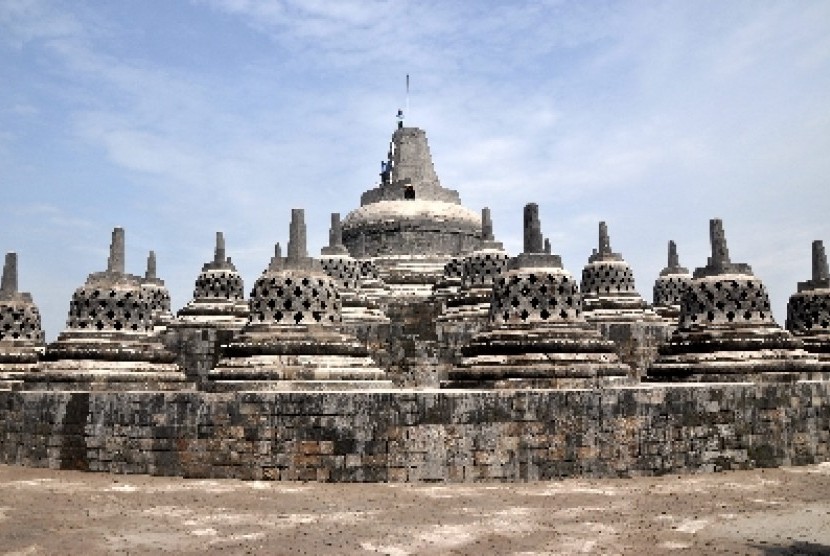REPUBLIKA.CO.ID, BOROBUDUR -- Local residents living around the Borobudur Temple, Magelang District, are developing a tourism attraction at Purwosari Hill which offers sunrise and misty morning viewing, as an alternative way to enjoy the world's largest Buddhist temple.
"The people are increasing their awareness of the potential of the surrounding environment, as they develop the hill into a tourism attraction in the Borobudur Temple area," said Mura Aristina, Advisor of Purwosari Sunrise Management of Wonotigo Hamlet, here on Saturday.
Purwosari Hill is located southwest of the Borobudur Temple. The community began developing the hill into a tourism attraction in early 2015.
There, visitors can view the sun rising between Mount Merapi and Merbabu in the morning.
The hill is visited by 5 to 10 people during the weekdays, on average, and some 25 to 30 people on the weekends, Mura said.
Visiting tourists reaching the top of the hill will also be greeted, with local hospitality being served, including morning tea or coffee and boiled cassavas.
Moreover, tourists can purchase locally made products, including traditional foods, such as palm sugar food made from cassava.
The management of Purwosari Hill does not charge entry fees, as only parking fees and voluntarily donations are requested, Mura said.
Visitors who want to enjoy the sunrise at Purwosari Hill should arrive by 05:00 am.
After parking their vehicles, visitors can follow a footpath to reach the top.
Some lamps were installed by local residents to light the path taken by visitors. They also provide visitors with bamboo sticks to assist them during the climb.
Borobudur, a famous Buddhist temple dating from the 8th and 9th centuries, is located in central Java.
The temple was built in three tiers, containing a pyramidal base with five concentric square terraces, the trunk of a cone with three circular platforms and, at the top, a monumental stupa.
The walls and balustrades are decorated with fine low reliefs, covering a surface area of 2,500 m2. Around the circular platforms are 72 openwork stupas, each containing a statue of the Buddha.
The monument was restored, with UNESCO's assistance, in the 1970s.


